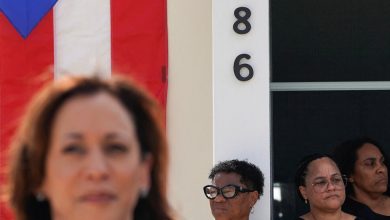Didn’t We Learn Anything From the #MeToo Movement?

A major effort to update the model criminal code on rape may actually undermine new understandings of consent advanced by the #MeToo movement.
Silence or a lack of resistance, as we have now learned, does not signal consent. Yet the proposed code — a blueprint for states in updating their own laws — suggests that a person’s inaction may in fact be interpreted by another as permission to engage in sex. This would turn back the clock on cultural and legal progress toward understanding consent as freely given agreement.
The proposed code is the work of the American Law Institute, the influential scholarly organization of mostly academics and lawyers that, among things, develops model codes state legislatures can use to revise their statutes. The group has been at work for 10 years reformulating its rape code, which its members will vote on this week at its annual meeting in Washington.
The Model Penal Code on Sexual Assault and Related Offenses was written in 1962 and has never been updated. It does not define consent. Since then, seismic cultural shifts have taken place in the thinking about gender, sex and sexuality, along with substantial changes in state rape laws.
We are members of the institute. A central point of contention in the deliberations over the new model code has been the meaning of sexual consent. With the profusion of highly public sexual assault cases in the last few years, you might think that the new model code would offer a state-of-the-art consent definition.
Not so. We fear that the institute will adopt a retrograde definition that may set back hard-fought advances and stall needed progress.
The place of consent in rape law has changed greatly. Sixty years ago, the institute saw no reason to define consent because the crime of rape hinged on physical force. The traditional rape paradigm involved a male stranger using physical force to overpower an innocent female who resisted his advances to the utmost.
The burden was on the victim to prove she was forced and resisted physically. If she failed to meet that burden, she was presumed to have consented. These gendered presumptions were expressly written into rape law.
Although not explicitly codified, rape presumptions were also racialized. While rape is overwhelmingly an intraracial crime, the legacy of slavery created a false narrative that it was largely interracial. “Male stranger” connoted a violent man of color, and “innocent female” a chaste white woman. Women of color were presumed to be unchaste, and therefore their nonconsent did not matter.
Over the past 50 years of sweeping cultural change, there has been a shift away from force and resistance toward consent as the proper dividing line between lawful and unlawful sex. This change transformed the meaning of rape. The feminist slogan “no means no” became widely accepted and written into law. Young people came of age seeing themselves as more egalitarian in their sexual relationships and appreciative of how communication enhances sexual intimacy.
One expression of these evolving mores has been the development of the idea of affirmative consent. Under New York’s 2015 “Enough Is Enough” law, “Affirmative consent is a knowing, voluntary and mutual decision among all participants to engage in sexual activity.” Affirmative consent is now commonplace in campus disciplinary codes — by one recent count, more than 1,500 colleges have adopted such policies. A handful of states, like New York, require colleges to incorporate affirmative consent in student codes of conduct.
Consistent with this momentum, New York and Utah are considering bills to codify affirmative consent as the criminal law standard. Perhaps a dozen other states have adopted similar definitions in their criminal codes. In many other states, there is still work to do to modernize laws. That is why the institute’s guidance is so important.
Early on, the institute’s draft rape law defined consent as “a person’s positive agreement” to engage in sexual intercourse. Over time, the word “positive” was jettisoned, and “agreement” was replaced by the more accommodating “willingness.” Although the definition now under consideration advises that resistance is not required, it also says, “Consent may be express or it may be inferred from behavior — both action and inaction — in the context of all the circumstances.”
These changes raise an urgent question: What is the legal meaning of passivity? In other words, if a person does nothing whatsoever, does that person consent to sex?
In the last few years, #MeToo has identified the marked power imbalances in many sexual assaults. The cases against Harvey Weinstein, Bill Cosby and others made clear that the law must not understand silence as consent.
Power differentials are not the only reason some victims are passive. Childhood sexual trauma may teach victims to remain still during abuse, a coping mechanism that can be activated almost automatically when a threat looms.
Victims may also freeze reflexively. Neurobiologists are now able to identify the brain circuitry responsible for immobilizing people when they face threats, whether during a school shooting, natural disaster or sexual assault. A legal burden to physically or verbally resist sexual assault ignores this mounting evidence.
The U.S. Department of Justice has objected to the institute’s proposed definition of consent, writing that it “would effectively place the onus on the victim to manifest physical or verbal nonconsent, rather than on the actor to secure the victim’s consent, creating the risk that fact-finders will erroneously conclude that a victim who was frozen by fear was communicating consent.” Any definition that allows inaction to imply consent imposes a new resistance requirement — one that maintains a longstanding scrutiny of the victim rather than the offender.
At its core, a definition of consent as freely given agreement represents a societal commitment to sexual autonomy. If the American Law Institute’s model code abandons that commitment, it is a model no state should embrace.
Michelle J. Anderson is the president of Brooklyn College, a former dean of City University of New York’s School of Law and a scholar on sexual assault. Deborah Tuerkheimer is a professor of law at Northwestern and the author of “Credible: Why We Doubt Accusers and Protect Abusers.”
The Times is committed to publishing a diversity of letters to the editor. We’d like to hear what you think about this or any of our articles. Here are some tips. And here’s our email: [email protected].
Follow The New York Times Opinion section on Facebook, Twitter (@NYTopinion) and Instagram.





